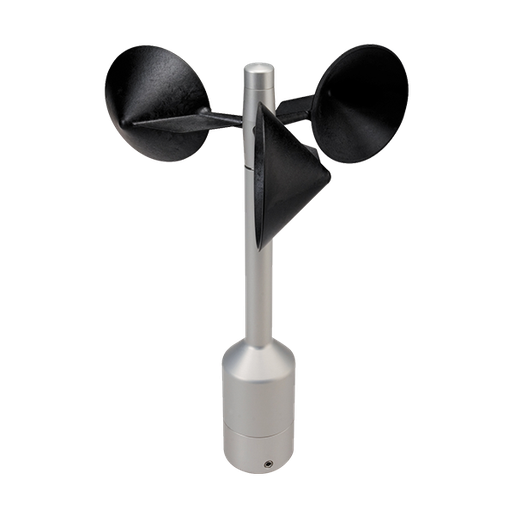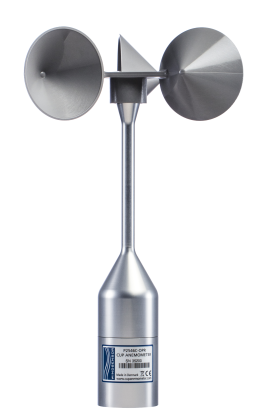All You Need to Find Out About Anemometers: Exactly How They Function, Why They Issue, and Where to Make use of Them
Anemometers, however often neglected in the realm of scientific instruments, play an important role in different areas, offering beneficial insights right into wind speed and airflow patterns. As we dig into the ins and outs of anemometer technology, we will certainly uncover the inner workings of these devices, their value, and the key factors to consider when picking the appropriate anemometer for certain applications.

Anemometer Essentials
An important tool made use of to measure wind rate and instructions, the anemometer plays an essential duty in weather forecasting and different sectors. An anemometer usually contains three or four mugs that revolve in the wind, a vane that points into the wind, and sensors to track the activities or turnings. By computing the turnings or activities over a particular period, the anemometer can determine wind rate. The vane helps determine wind direction by aiming right into the wind, offering useful data for weather condition projecting, aeronautics, maritime operations, ecological monitoring, and wind energy applications.
There are different kinds of anemometers available, consisting of mug anemometers, vane anemometers, hot-wire anemometers, and sonic anemometers, each with its special functions and applications. Mug anemometers are commonly utilized for fundamental wind rate measurements, while vane anemometers are favored for directional measurements.
Concepts of Anemometer Procedure
Building on the fundamental understanding of anemometer basics, the concepts of anemometer operation clarify the mechanics behind wind rate and direction measurements. Anemometers run on the principle of airflow affecting a sensor, creating it to revolve. Mug anemometers, for circumstances, have 3 or even more mugs that catch the wind, creating them to rotate faster as the wind speed rises. The turning speed is then exchanged a wind rate dimension. Vane anemometers, on the various other hand, use a tail or a probe that straightens itself with the wind instructions, supplying a dimension of wind instructions based on the alignment of the sensing unit. Hot-wire anemometers count on a warmed cable that cools down as wind overlooks it, with the rate of cooling down figuring out the wind speed. Ultrasonic anemometers step wind speed and direction by assessing the time it considers ultrasonic signals to take a trip in between transducers. Understanding these concepts is crucial for accurate and reliable wind dimensions in various applications.
Importance of Anemometers
The significance of anemometers in weather forecasting and numerous industries can not be overstated. Anemometers play a crucial role in measuring wind rate and direction, providing necessary information for weather condition projecting, environment studies, environmental tracking, and air travel procedures. Meteorologists rely on anemometers to collect accurate wind information, aiding them recognize weather condition patterns, forecast tornados, and problem prompt cautions to the public. In sectors such as building, farming, sustainable energy, and maritime procedures, anemometers are made use of to enhance procedures, make sure security, and enhance performance. Wind ranch operators utilize anemometers to assess wind problems and make the most of electrical power production from wind generators. In the maritime field, anemometers aid ship navigation by offering real-time wind info to captains, helping them make informed choices to ensure safe trips. In general, anemometers are indispensable devices that contribute considerably to safety and security, performance, and informed decision-making in weather forecasting and a wide variety of sectors.
Applications Across Numerous Industries
Applications of anemometers extend across varied sectors, showcasing their convenience and utility beyond meteorology. In the renewable resource industry, anemometers play a critical duty in evaluating wind problems for wind farm positionings, making sure optimum energy manufacturing. Industries like building and mining utilize anemometers to check wind speeds, vital for safety protocols, particularly when working at heights or in open-pit mines where strong winds can pose dangers. Anemometers are also important in the aeronautics sector, aiding pilots in recognizing airspeed and wind instructions for risk-free take-offs and landings. The maritime sector take advantage of anemometers for ship navigation, aiding sailors prepare for weather condition adjustments and change paths appropriately. In agriculture, anemometers help farmers in managing crop spraying by giving real-time information on wind speed to prevent drift. Anemometers locate applications in HVAC systems to enhance air flow and improve power performance in structures. The have a peek at this website varied use instances of anemometers highlight their relevance across various sectors, highlighting their get redirected here crucial function in enhancing functional safety and security and efficiency (anemometer).

Choosing the Right Anemometer for Your Needs
For basic purposes, a mug anemometer is ideal for gauging wind speed, while a vane anemometer supplies wind direction information. Hot-wire anemometers are perfect for reduced airspeed measurements, and ultrasonic anemometers use high accuracy and resilience.

Verdict
In conclusion, anemometers play an important function in determining wind speed and direction throughout numerous sectors. It is important to consider the relevance of anemometers in order to make educated decisions when choosing the most appropriate tool for gauging wind conditions.
There are various kinds of anemometers offered, consisting of mug anemometers, vane anemometers, hot-wire anemometers, and sonic anemometers, each with its unique functions and applications. Cup anemometers are commonly used for basic wind rate measurements, while vane anemometers are chosen for directional dimensions. Hot-wire anemometers are ideal for reduced airspeeds, and sonic anemometers are ideal for high-precision measurements in study and industrial setups.Building on the fundamental understanding of anemometer basics, the concepts of anemometer operation illuminate the mechanics behind wind rate and this link direction measurements. For general purposes, a cup anemometer is ideal for gauging wind rate, while a vane anemometer gives wind instructions data.